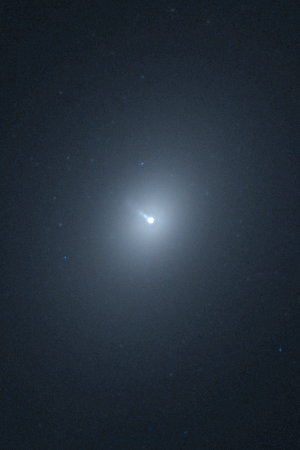NGC 1218
| Galaxy NGC 1218 |
|
|---|---|

|
|
| Photo from the Hubble Space Telescope | |
| AladinLite | |
| Constellation | whale |
|
Position equinox : J2000.0 , epoch : J2000.0 |
|
| Right ascension | 03 h 08 m 26.2 s |
| declination | + 04 ° 06 ′ 39 ″ |
| Appearance | |
| Morphological type | S0 / a / LEG / Sy1 / BLLAC |
| Brightness (visual) | 13.4 mag |
| Brightness (B-band) | 14.3 mag |
| Angular expansion | 1.3 ′ × 1 ′ |
| Position angle | 155 ° |
| Surface brightness | 13.6 mag / arcmin² |
| Physical data | |
| Redshift | 0.028653 ± 0.000100 |
| Radial velocity | 8590 ± 30 km / s |
|
Stroke distance v rad / H 0 |
(384 ± 27) · 10 6 ly (117.7 ± 8.3) Mpc |
| history | |
| discovery | Lewis A. Swift |
| Discovery date | September 6, 1886 |
| Catalog names | |
| NGC 1218 • UGC 2555 • PGC 11749 • CGCG 416-002 • MCG + 01-09-001 • 2MASX J03082624 + 0406388 • GALEX ASC J030826.26 + 040640.4 • LDCE 223 NED003 | |
NGC 1218 is a lenticular galaxy with an active nucleus of the Hubble type S0 / a in the constellation Whale south of the celestial equator . It is estimated to be 384 million light years from the Milky Way and about 150,000 light years in diameter.
A strong radio source cataloged at 3C 78 is assigned to NGC 1218. The radio emission is caused by a supermassive black hole in the center of the galaxy, whose gigantic jet can also be observed in the visible wavelength range with the Hubble space telescope .
The Type Ia supernova SN 2000fs was observed here.
The object was discovered on September 6, 1886 by the astronomer Lewis A. Swift .
Web links
Commons : NGC 1218 - collection of images, videos, and audio files
